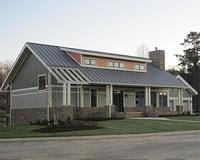 |
Arlington VA (SPX) Sep 28, 2010 The Office of Naval Research Global (ONR Global) continues to pursue aggressive energy goals established by Secretary of the Navy Ray Mabus, with the design of a system that controls electrical flow for lighting, a highly efficient platform that may spark a new era of power savings. Designed by the Tokyo Institute of Technology and fine-tuned by researchers at MERSTech in partnership with the ONR Global's office in Tokyo, the Magnetic Energy Recovery Switch (MERS) harnesses and recycles residual magnetic power that is produced by electrical current. By using a device that controls the flow of electricity, light bulbs can now maximize their potential. The proposal for the expanded experiment is scheduled for completion in October. Dr. Chandra Curtis, program officer in ONR Global's Tokyo office, said she is excited about the potential for mass consumption savings. "We initially started by helping [MERSTech and the Tokyo Institute of Technology] optimize the development and assess the potential of the technology" Curtis said. "Now, we are looking for ways to demonstrate our commitment of energy savings to the Japanese government." This technology directly aligns with Mabus' goals for the Department of the Navy, which were set at the 2009 Naval Energy Forum. Aside from utilizing renewable power sources for at least half of the shore-based energy on Navy bases, Mabus iterated a goal to ensure that at least 40 percent of the Navy's total energy consumption comes from alternative sources by 2020. From April to June 2010, ONR Global funded a series of experiments at Tokyo's Hardy Barracks Installation to analyze and evaluate the energy saving capability of the MERS lighting controller. After working with several overhead fluorescent lights that require 24-hour power, scientists proved that the MERS technology significantly reduced lighting energy consumption. "After the testing was complete, we learned that with the new device installed there was a peak power saving of 39 percent," Curtis said. "The device not only conserves electricity, but produces far less heat and produces less electromagnetic interference than conventional technologies." A proposal to apply the experiment to the entire Hardy Barracks Installation will be completed by the end of October 2010, carrying the project into 2011 if approved. Proposed testing areas include a break room, printing press room, laundry room, gymnasium and several offices. "In trying to align with the Joint Statement of the U.S.-Japan Security Consultative Committee, scientists are trying to help reduce the impact on local communities by reducing the energy footprint of existing U.S. installations, becoming more responsible stewards of the environment," Curtis said. The U.S. Energy Information Administration estimates that in 2008 about 517 billion kilowatt-hours of electricity were used for lighting by the residential and commercial sectors. Lighting accounts for nearly 20 percent of the average home's electricity use, according to the U.S. Environmental Protection Agency.
Share This Article With Planet Earth
Related Links Office of Naval Research Powering The World in the 21st Century at Energy-Daily.com
 New Oak Ridge Homes Are Labs For Energy Efficiency
New Oak Ridge Homes Are Labs For Energy EfficiencyOak Ridge TN (SPX) Sep 23, 2010 Four East Tennessee homes completed this month showcase how scientific research can make dramatic changes in the cost of heating and cooling our homes. The four houses, located in the Wolf Creek subdivision in Oak Ridge, use about 55 to 60 percent less energy than conventional houses while maintaining similar amenities. "These homes are a great example of what can be done when we par ... read more |
|
| The content herein, unless otherwise known to be public domain, are Copyright 1995-2010 - SpaceDaily. AFP and UPI Wire Stories are copyright Agence France-Presse and United Press International. ESA Portal Reports are copyright European Space Agency. All NASA sourced material is public domain. Additional copyrights may apply in whole or part to other bona fide parties. Advertising does not imply endorsement,agreement or approval of any opinions, statements or information provided by SpaceDaily on any Web page published or hosted by SpaceDaily. Privacy Statement |